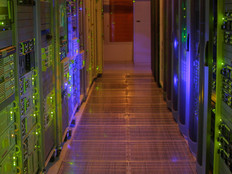What to Consider Before Adopting Hyperconverged Infrastructure
Industry experts say that, for now, hyperconverged infrastructure (HCI) — which includes computing, storage, networking and virtualization capabilities, all pre-integrated and controlled by a single management layer — will augment rather than fully replace traditional data center implementations.
This means migration plans should accommodate the reality of mixed environments that also include clouds and converged appliances (integrated units designed without HCI’s software-defined orientation).
Experts recommend four steps for understanding the best fit for HCI and achieving the desired benefits.
-
Start with business drivers. “Determine the specific applications and use cases that can be best supported with a hyperconverged solution,” says Charles King, principal analyst at Pund-IT. IT managers must think beyond traditional areas such as VDI and consider any area that may benefit from on-demand provisioning and scalability. They should match the HCI solution to particular workloads by considering the unique needs of each application. For example, a database application may require access to hundreds of thousands of input-output operations per second and zero downtime. Others, such as data-analytics solutions, may need high volumes of storage capacity.
-
Look closely at hypervisors when shopping for HCI solutions. “Depending on current commitments and the skill set of the IT staff, the right hypervisor can influence how quickly the hyperconverged system starts to fulfill its promise,” King says. Options include widely adopted technologies from VMware and Microsoft, as well as native virtualization products from hyperconvergence vendors. For example, Nutanix includes its AHV virtualization technology within its Acropolis data fabric.
-
Test drive management software during the HCI selection process. Nutanix is among the vendors that let IT decision-makers load their management software on internal servers and the public cloud to test its features.
-
Look for opportunities where HCI can optimize available IT resources. Many HCI systems ship with high-performing flash storage systems, which can help eliminate performance bottlenecks in existing operations. “Enterprises can off-load the 20 percent of workloads that are creating performance problems to HCI to rebalance their environments,” says Lee Caswell, vice president of products, storage and availability at VMware. “Then, applications that need higher performance will run faster, and at the same time the useful life of the traditional storage area network [SAN] will be extended by serving the 80 percent of workloads with less stringent performance requirements.”
To help with these efforts, VMware’s Virtual Volumes, also known as VVol, lets administrators manage traditional storage systems with same policy-based software controls as in the company’s Hyper-Converged Software suite. Similarly, controls within Hewlett Packard Enterprise’s HCI solutions can also run across traditional SANs.
Evaluate HCI Options Carefully
But HCI isn’t for every organization. Research shows that IT executives remain concerned about vendor lock-in. The cost of buying and installing hyperconverged solutions may also foster reluctance among IT decision-makers, particularly in areas where existing investments haven’t been fully depreciated.
Those who harbor lock-in concerns should pay particular attention when evaluating HCI solutions. They should look for platforms that offer native tools for moving all or portions of applications from the HCI unit to and from public clouds. In addition to ensuring full portability of the workloads, this also enables organizations to find the best mix of onsite and cloud resources, and make adjustments over time.
Some IT organizations also struggle with systems-management challenges once an HCI solution is in place with their existing infrastructure. Problems arise when too many management policies and systems are used to control hyperconverged systems along with legacy storage, computing, networking and virtualization resources. The key is to implement a single management policy that applies common software-defined policies across all those elements. “Ask vendors how interoperable the HCI management software is with the existing converged and traditional IT environments,” says Eugene Kim, product marketing manager for Cisco hyperconverged infrastructure and UCS.
Other management must-haves include built-in analytics to understand changes in performance requirements before bottlenecks occur. For example, if an HCI node is nearing its capacity limits, analytics can suggest adding another node or shifting workloads to nodes with more capacity.
Plan for Future Evolutions of Your IT Environment
IT managers considering HCI should keep an eye on the future. For example, they can request roadmaps from vendors to determine whether a specific HCI appliance will support new generations of composable applications and microservices. “As you increase your deployment of hyperconvergence, you want to make sure you can integrate it seamlessly with your ongoing cloud strategy,” says Paul Miller, vice president of marketing for converged data center infrastructure at HPE.
HCI scalability can also cause concerns. While scalability is generally seen as an advantage of the hyperconverged approach, problems arise when individual resources — computing or storage capacity, for example — run out of headroom before others. If storage capacity becomes full, an organization may not be able to expand just that area and instead must plug in another fully integrated system. Some vendors are addressing this issue. For example, Cisco’s HyperFlex System lets IT managers independently scale up computing, storage and networking resources to avoid overprovisioning, Kim says.
While running more mission-critical workloads on HCI systems offers potential benefits, it also means reliability takes center stage. “Production systems can’t go down, but if they do, they must come back up quickly and easily,” Miller says.
One factor that affects reliability is whether a hyperconverged system automatically updates firmware and software patches to avoid system crashes and security gaps. In addition, some HCI vendors now offer support contracts that make them the central point of contact for all issues, even if the solution includes hypervisors or other components from different companies. “Instead of getting into a finger-pointing contest, you call one vendor to sort out the problem,” Miller explains.
In their efforts to improve reliability, hyperconvergence vendors have sought to ensure that HCI 2.0 retains the make-IT-simple heritage of the first generation. “The less time you spend figuring out whose problem it is, the more time you have to do your real work.” Miller says.
Discover more about hyperconverged infrastructure by visiting CDW.com.









